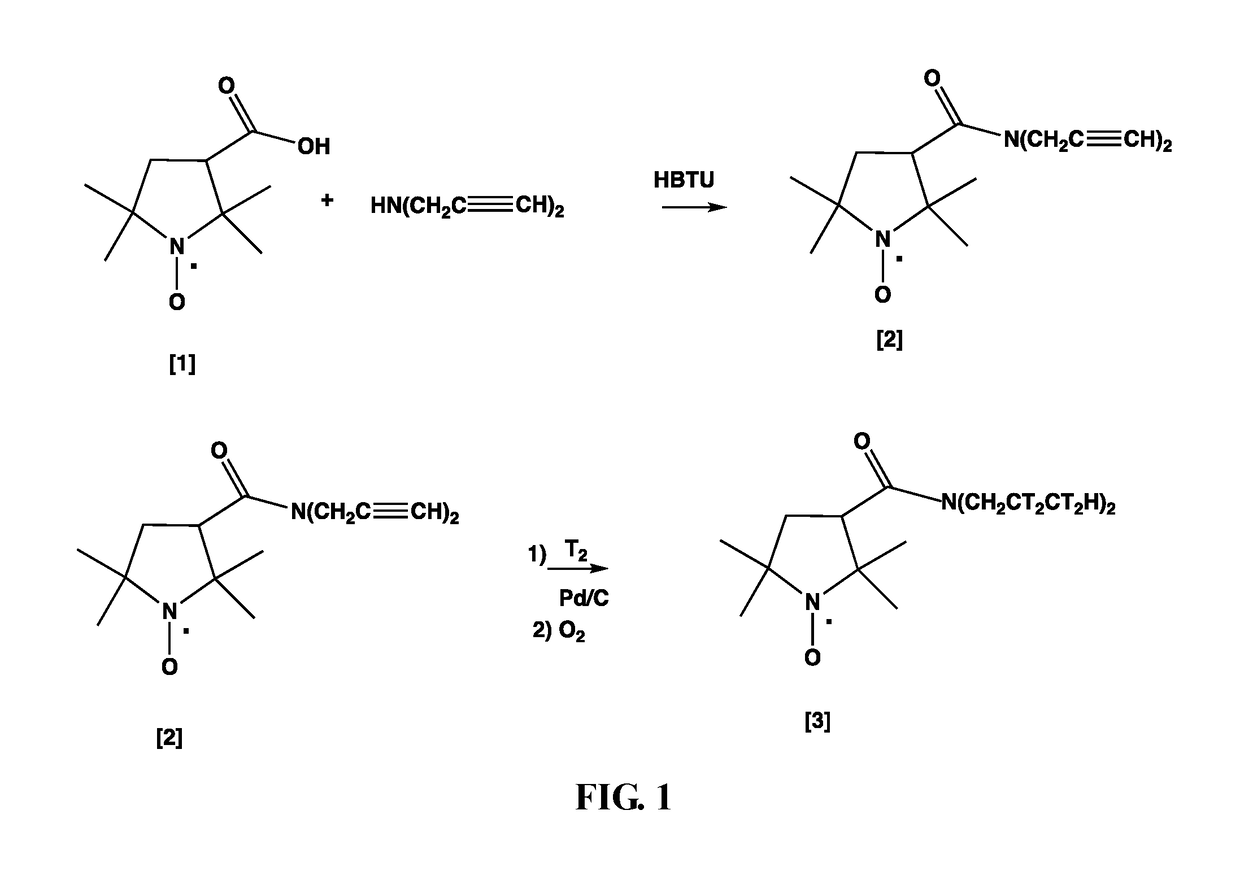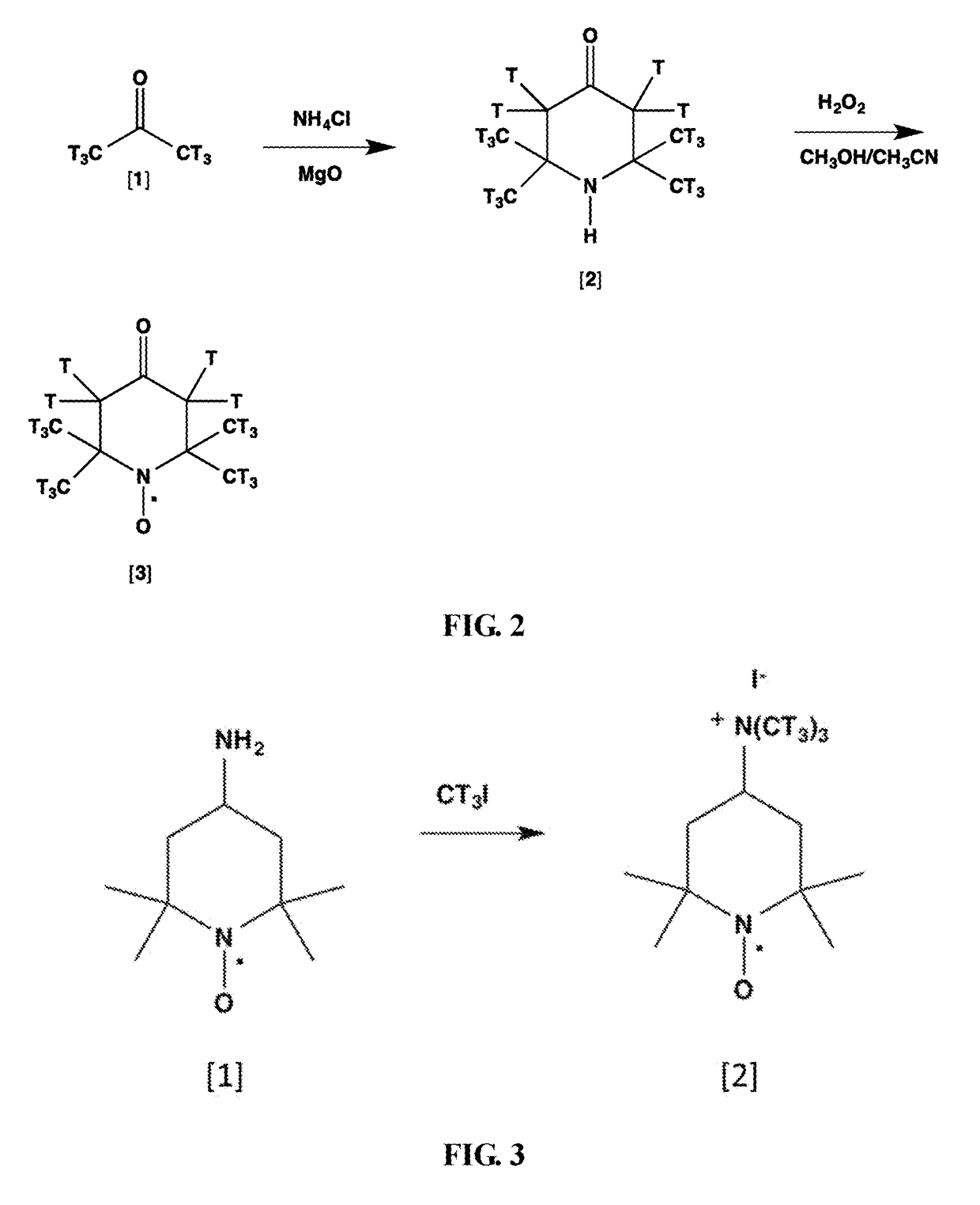Tritiated nitroxides and uses thereof
a technology of nitroxide and beta radiation source, which is applied in the field of tritiated compounds, can solve the problems of inability to withstand the test of time, and inability to withstand the test of time, and achieves the effects of high energy density, convenient synthesis of nitroxide-based beta radiation source, and low cos
- Summary
- Abstract
- Description
- Claims
- Application Information
AI Technical Summary
Benefits of technology
Problems solved by technology
Method used
Image
Examples
Embodiment Construction
[0032]Inventors have found that nitroxides provide stable and readily synthesized sources of tritium-derived beta radiation. Such nitroxides can be provided as pliable and / or moldable solids that can be configured for a wide variety of applications, and are readily soluble in a wide variety of organic solvents to provide a solution for liquid application. Such liquid applications can be subsequently permitted to dry to provide a powder or powder coating. Inventors have found that such tritiated nitroxides are particularly suitable for use β radiation sources in nuclear batteries, for example as stable sources of β-radiation that can be readily applied to a semiconductor or photoelectric components of such nuclear batteries.
[0033]The following discussion provides example embodiments of the inventive subject matter. Although each embodiment represents a single combination of inventive elements, the inventive subject matter is considered to include all possible combinations of the disc...
PUM
| Property | Measurement | Unit |
|---|---|---|
| thickness | aaaaa | aaaaa |
| mass density | aaaaa | aaaaa |
| thick | aaaaa | aaaaa |
Abstract
Description
Claims
Application Information
 Login to View More
Login to View More - R&D
- Intellectual Property
- Life Sciences
- Materials
- Tech Scout
- Unparalleled Data Quality
- Higher Quality Content
- 60% Fewer Hallucinations
Browse by: Latest US Patents, China's latest patents, Technical Efficacy Thesaurus, Application Domain, Technology Topic, Popular Technical Reports.
© 2025 PatSnap. All rights reserved.Legal|Privacy policy|Modern Slavery Act Transparency Statement|Sitemap|About US| Contact US: help@patsnap.com



